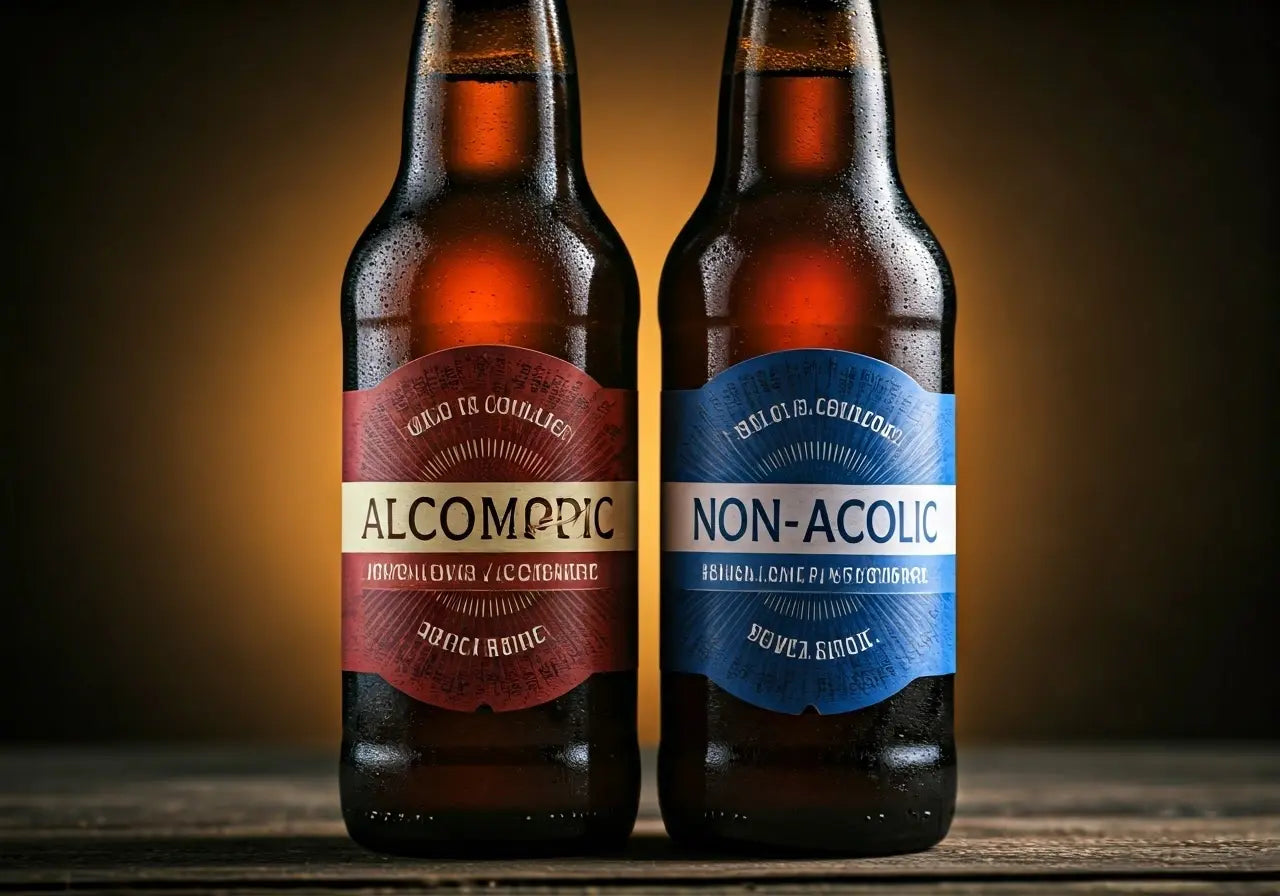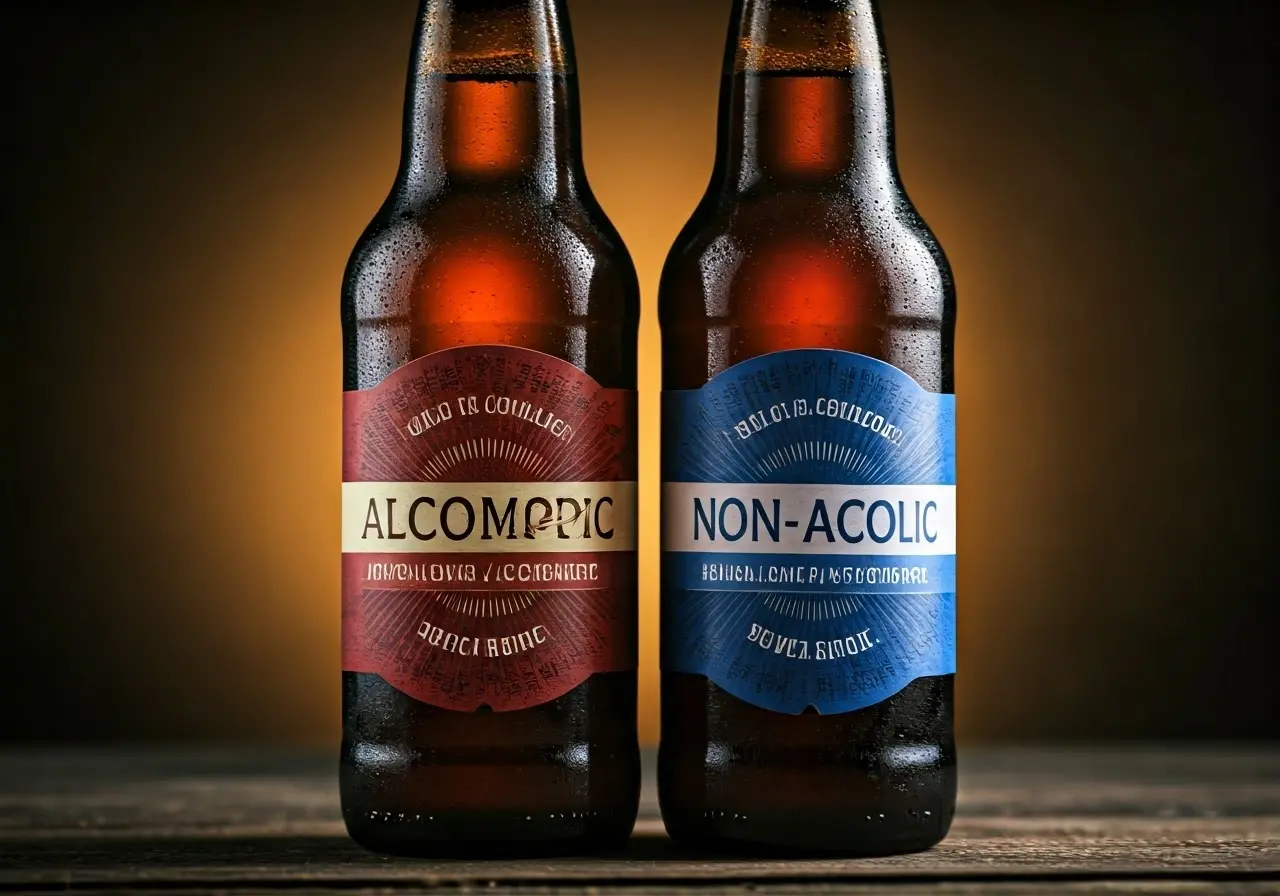The world of beer is diverse and exciting, with new options emerging constantly. One such intriguing option is non-alcoholic beer, which often claims to mimic the taste of regular beer. But can it truly compare?
Understanding Non-Alcoholic Beer
Non-alcoholic beer is crafted to mimic traditional beer but with less than 0.5% alcohol content. This makes it a popular choice for those looking to reduce alcohol intake without giving up beer entirely.
The allure of non-alcoholic beer lies in its ability to provide the familiar taste and social experience of drinking beer while skipping the intoxicating effects. As consumer preferences evolve towards healthier choices, non-alcoholic beer offers an attractive alternative. It’s a perfect option for those who enjoy beer’s flavor but either must or choose to abstain from alcohol.
The market for non-alcoholic beer has expanded significantly over the years, driven by innovations and product launches from key industry players. The variety available now mirrors the diversity found in the alcoholic beer market. This evolution reflects a broader shift towards health consciousness and inclusivity, accommodating those who avoid alcohol for religious or health reasons.
An interesting historical note is that non-alcoholic beer dates back to the Prohibition era, when breweries created low-alcohol options to stay in business. Although these early versions weren’t particularly flavorful, today’s non-alcoholic beers are crafted using sophisticated techniques that allow them to retain much of the traditional beer taste and aroma.
How is Non-Alcoholic Beer Made?
There are two main methods: removing alcohol from regular beer or controlling fermentation to produce minimal alcohol. Each method impacts the final taste differently.
Most non-alcoholic beers begin their journey just like regular beers, with the brewing of a typical beer using water, malt, hops, and yeast. The divergence occurs after fermentation, where innovative techniques such as vacuum distillation and reverse osmosis are employed to carefully remove or reduce the alcohol content.
The fermentation process can also be altered to limit alcohol production naturally. This method involves precise temperature control or the use of special yeast strains to ensure that the final product achieves the desired taste with minimal alcohol. Although each brewer has their own unique processes and secret touches, the objective remains consistent: mimic the flavor of traditional beer as closely as possible.
New advancements have significantly improved the non-alcoholic beer landscape, with many products pushing boundaries to closely replicate their alcoholic counterparts. Brewers often enhance the body and flavor of non-alcoholic beers by adding carbon dioxide and sometimes additional flavours or stabilisers post alcohol-removal, ensuring the drink satisfies both in taste and mouthfeel.
Does Non-Alcoholic Beer Taste the Same?
Taste is subjective, but non-alcoholic beers have come closer to capturing the flavor profiles of regular beer. Ingredient selection and brewing methods play crucial roles.
The flavor of non-alcoholic beer can often be milder and less complex due to reduced alcohol content, which contributes to the overall taste. However, advances in brewing have significantly closed this gap, allowing non-alcoholic beers to sometimes be almost indistinguishable from regular beers, especially in casual settings.
Brewing techniques have progressed to the point where certain non-alcoholic beers mimic the taste and aroma of their alcoholic versions exceptionally well. Examples of these innovations in taste can be seen in brands like Guinness 0.0 and Athletic Brewing Co., which strive to meet the expectations of even the most ardent beer enthusiasts.
Despite these improvements, some differences remain. Non-alcoholic beers may have a lighter body, less bitterness in hoppy variants, and slightly reduced sweetness in malty styles. These differences depend on individual palate sensitivity and the specific styles being compared.
For some beer lovers, the appeal of non-alcoholic beer lies in its clean finish and refreshing qualities without the lingering heaviness that alcohol often imparts. As more people discover these beverages, the balance of flavors in non-alcoholic beers continues to evolve, offering exciting possibilities for those willing to explore this growing segment of the beer world.
Popular Non-Alcoholic Beers to Try
If you’re curious, try popular brands like Heineken 0.0, Athletic Brewing Co., or Clausthaler. They offer diverse styles that cater to various taste preferences.
The rise of non-alcoholic beer has introduced an array of flavors and styles to explore. Brands like Heineken 0.0 and Clausthaler have become household names for their ability to deliver satisfying flavor profiles that appeal to a wide audience.
For craft beer enthusiasts, options like Athletic Brewing Co. provide innovative non-alcoholic IPAs and stouts that maintain the complexity and character of traditional craft beers. These offerings are a testament to the versatility and potential of non-alcoholic brewing.
Exploring the diverse range of non-alcoholic beers available can be a journey of discovery, revealing unexpected flavors and satisfying alternatives. Whether you’re drawn to fruity pale ales or rich dark stouts, the non-alcoholic beer market holds something for every palate.
Benefits of Choosing Non-Alcoholic Beer
Non-alcoholic beers offer benefits such as reduced calorie intake and less dehydration. They can be enjoyed safely by designated drivers or those avoiding alcohol for personal reasons.
One of the most appealing aspects of non-alcoholic beer is its health benefits. Unlike regular beer, it typically contains fewer calories, making it an attractive option for those mindful of their dietary intake. Additionally, with its low alcohol content, non-alcoholic beer does not contribute to dehydration and can be safely consumed by designated drivers.
Non-alcoholic beer also promotes inclusivity by providing an option for individuals who abstain from alcohol due to religious, health, or personal reasons. This inclusivity extends to social situations where everyone can enjoy a beer without the pressure or implications associated with alcohol consumption.
Furthermore, the risk of hangovers is significantly reduced with non-alcoholic beer, allowing the enjoyment of a beer-like experience even on weekdays or during busy periods when avoiding any potential after-effects is critical.
Choosing non-alcoholic beer is a conscious decision that aligns with current trends around health and wellness. As this sector of the market continues to grow, it signals a broader cultural shift in drinking habits, offering people refreshing choices that suit their lifestyle without compromising on taste.
The Final Verdict on Non-Alcoholic Beer
While non-alcoholic beers have made significant strides in taste, whether they match your palate preferences like regular beer depends on individual taste. It’s worth trying a few to see for yourself.

